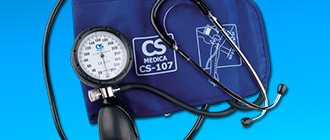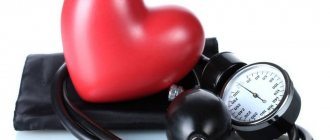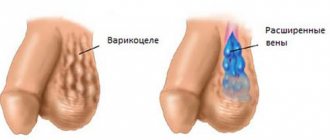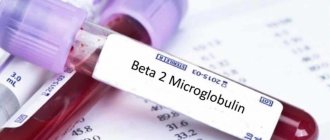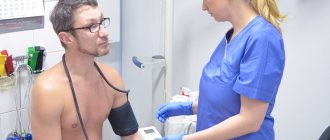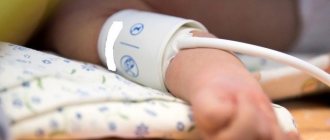Mercury tonometers, despite their “antiquity,” are still considered the most accurate mechanical devices for measuring blood pressure in medical institutions. The mercury meter is the oldest structural principle of sphygmomanometers, the predecessors of which were involved in both the measurement of blood pressure and the determination of the unit itself. One of the oldest mercury tonometers is Riva Rocci. Today it is classified as an antique, just like devices made in the USSR (collectors are willing to pay a lot of money for Soviet and foreign devices). More modern mercury tonometers are Diplomat presameter (Riester) and instruments from the manufacturer Bremed.
According to the instructions, the Diplomat presameter mercury tonometer is indicated as an accurate blood pressure meter. It is not inferior to Diplomat presameter and Bremed, the accuracy of which is considered to be quite high. Both devices are packaged in a convenient case.
The principle of a mercury tonometer
A mercury tonometer for measuring blood pressure is a tonometer consisting of the instrument itself and inflatable cuffs with a balloon and a valve. It is a bottle containing a small amount (several tens of milliliters) of mercury. This bottle is connected by a capillary to a measuring column, in which, due to atmospheric pressure, the default value is zero. When the pressure in the cuff increases, mercury is released from the bottle into the capillary, and the mercury column on the scale shows the current value of the pressure in the cuff. Both the cuff inlet connector and the measuring tube are separated by valves and filters so that spontaneous leakage of mercury does not occur. The measured scale usually has a range of up to 300 mmHg. Art., although even in severe conditions of hypertension there is no need to compress the cuff more than 250 mm Hg. Art.
Mechanical tonometers.
Compact and unpretentious , suitable for most users. The air pressure in the cuff is balanced not by a column of mercury, but by a sealed vessel with a flexible membrane. Depending on the bending of the membrane, the pressure gauge needle moves around the dial.
The tonometers are safe (do not contain mercury), compact, and weigh much less than mercury tonometers (the average weight of a mechanical Riester tonometer including a cuff is about 300 grams). High-quality tonometers are not sensitive to moderate mechanical influences - light shocks and shaking. However, compared to mercury tonometers, mechanical tonometers are less accurate - the flexible membrane is sensitive to changes in ambient temperature, and its sensitivity decreases over time. When using a metal membrane during operation, its elasticity decreases; with increased humidity, the membrane is subject to corrosion. The measuring mechanism of the tonometer does not like dust. Those. In order for measurements to be correct, it is necessary to regularly calibrate and clean the measuring mechanism.
To achieve maximum accuracy and extend service life, manufacturers come up with their own know-how. For example, in Riester tonometers:
- A copper-beryllium membrane is used (inexpensive tonometers from other manufacturers use a thin metal membrane). The copper-beryllium membrane does not lose elasticity over the years, does not react to changes in ambient temperature, has a double safety margin against excess pressure, and does not oxidize at high humidity. If you protect the device from rough physical influences, the tonometer will last a VERY long time!
- The air filter system prevents dust from penetrating into the tonometer housing.
- The release needle valve is made of particularly durable metal that does not wear out even with frequent use. This allows you to protect the tonometer from “air leaks”—spontaneous bleeding of air—for many years.
For additional protection of the measuring mechanism, a number of manufacturers offer tonometers in anti-shock design . Such models are not only intended for emergency services. The developers believe that even with normal use within the walls of the clinic, the tonometer will definitely be dropped several times a month. Depending on the height and angle of the fall, the calibration of the tonometer may be lost, so after each “injury” it is recommended to send the tonometer to a service center for verification. Shock-proof tonometers can withstand falls from a height of up to 1.2 meters (a guaranteed safe height to preserve the calibration), so this type of mechanical tonometer is recommended for intensive use outside the home.
Mechanical blood pressure monitors for self-measurements have some differences. As a rule, these models are equipped with a built-in stethoscope (the flat head of the stethoscope is built into the cuff). The cuff is equipped with a metal bracket to make it easier to wrap the Velcro around the forearm yourself.
Summary Mechanical blood pressure monitors are safe, compact and unpretentious. They will suit most practitioners and home users. However, when purchasing a tonometer, you should pay increased attention to the quality and accuracy of the measuring mechanism.
*****
Measurement
The instructions for using a mercury tonometer are simple. The measurement scheme is as follows:
- the patient exposes the arm on which the measurement will be taken, taking care that the sleeve does not compress it;
- a blood pressure cuff is placed at heart level;
- by using a balloon, the cuff is inflated enough to interrupt blood flow in the artery;
- the phonendoscope is applied to the elbow;
- pressing the balloon increases blood pressure values to approximately 140 mmHg. Art. (they are shown by the mercury column on the scale) - this stops the flow of blood through the arteries;
- the air from the cuff is then gradually released through the balloon valve.
First attempts to measure pressure
Even in Ancient Egypt, people knew how to feel the pulse, but the first experiments on measuring pressure were carried out only in 1773. It was then that the English research scientist Stefan Hales tried to determine the blood pressure of a horse. To do this he:
- He tied the left femoral artery of the animal with a rope;
- He made a puncture into which he inserted a copper tube connected to a test tube;
- When the rope was loosened, the blood in the test tube began to rise and fall simultaneously with the pulse beats.
Even with a stretch, such a device cannot be called the first tonometer. However, it was Hales’ technique that became the beginning of a new diagnostic direction in medical science.
The next significant event in this area occurred almost a hundred years later: the Frenchman Jean Louis Poisey measured pressure using a mercury manometer. The device was connected to a cannula inserted directly into the artery.
Advantages
Reliable construction, simple design, accurate transmission of pressure in the cuff to the scale - thanks to these factors, even modern specialists use mercury tonometers. This measurement method provides more accurate results even with severe arrhythmia. Despite this fact, these devices are being eliminated from healthcare settings today due to the minimization of mercury used in healthcare. In addition, the complexity of repairs plays a role due to the frequent lack of necessary spare parts. After a breakdown, a mercury pressure meter is easier to dispose of. Most likely, in the near future, a mercury tonometer (USSR and other countries) will only be seen in photographs...
Important! Disposal of the device should only be carried out by specialists!
Advantages of MDF brand sphygmomanometers
The most accurate data is provided by a blood pressure meter - a sphygmomanometer when measuring large arteries: femoral or brachial. To carry out measuring manipulations using the MDF brand adult sphygmomanometer, no qualifications are required.
A high-precision medical sphygmomanometer determines and indicates signs of arrhythmia, arterial hypertension, and the device measures blood pressure in patients with an unstable heartbeat. For older people, doctors recommend an automatic tonometer-sphygmomanometer that is convenient and comfortable for home use. In offline mode, the device measures the heart pulsation rate, the pressure value after putting on the cuff, or pressing a button. The program displays the results on the screen of the blood pressure meter.
The competitively priced sphygmomanometer is distinguished by its functionality, since production involves equipping the device with auxiliary functions:
- pulse rhythm analysis;
- voice results for users with low vision;
- saving readings (data archive).
What was the prototype of the modern tonometer?
Soon after this, the prototype of the modern tonometer appeared. The device was created in 1881 by Samuel Z.K.R. von Basch, a doctor from Austria. His device worked like this:
- A hollow rubber bag filled with water was placed on the pulsating area of the artery;
- The sac pressed on the artery until the pulsation stopped completely;
- The strength of this pressure was measured with a mercury manometer;
- This indicator reflected systolic pressure.
Modern methods of measuring pressure appeared in 1896. Its author was the Italian S. Riva-Rocci, who invented a new device. In appearance, the device was similar to the tonometers that we use now. An empty rubber bag was inserted into a cuff made of non-stretch material. This structure was wrapped around the shoulder and connected to a pressure gauge. The cuff was pressurized through a special bulb.
As the pressure increased, the pulsation disappeared. After this, the pressure was relieved, and the pressure gauge reading at which pulsation resumed was considered the blood pressure level. True, the width of the cuff was only 5 cm, so it pinched the measurement area. Because of this, inaccuracies in the results arose. The problem was solved by Heinrich von Recklinghausen, who proposed using a 12 cm wide cuff.
Who came up with the idea of measuring pressure and how: another history of the issue
Today we offer you another note from the “how it was” section, in which we have already briefly introduced you to the history of the pedometer, the problem of studying the phenomenon of lucid dreams, the real “author” of the electronic cigarette, as well as the great history of the study of the human brain.
This time we offer the history of blood pressure measurement, fortunately it is short: pressure was first measured in 1733, and inside we will tell you about who did it. Blood pressure can be measured directly or "indirectly", and the latter includes all non-invasive methods, the most common of which and the most "cited" are digital and mechanical blood pressure monitors. However, given a certain passion for this “metric” among manufacturers of wearable gadgets, pears and cuffs are no longer a monopoly.
On the pages of our blog you could read a review of the W/me2 tracker and see a selection of modern gadgets that can or could be able to take measurements. Rumors about the second Apple Watch model systematically endow the new watch with a pressure sensor, and market leader Fitbit assured its CEO last year that it would add the ability to monitor pressure this year. One way or another, these are all “non-classical” methods
Of course, none of us really knows what will happen in the future, but we dared to look a little into the past. So, blood pressure was first measured by Stephen Hayles
. This is the very case when medicine and religion successfully “coexisted” in one head and did not interfere with each other.
The theologian and natural scientist was born in 1677 into a large family. He studied theology and natural sciences, after which he served as a vicar in one of the counties.
However, he is remembered not as a philosopher or a Christian theorist, but as a scientific naturalist, whose name is associated with several major discoveries in botany, a number of inventions, as well as the first experiments in measuring pressure. The second part of his book “Static Essays” is devoted to these experiments, which contains descriptions of experiments and tables of data obtained for the first time.
It must certainly be clarified that the first experiments with inserting a tube into vessels to determine to what height the blood rises were, of course, not carried out on humans, for which, by the way, Hales was criticized, including by famous contemporaries. One of them was the poet Alexander Pope, a passionate dog lover.
An image of one of Hales's first experiments, which he carried out on horses, has survived:
One way or another, this "knacker" approach gave Hales the title of the first person to measure blood pressure, and "Hemostatics", a book from the second part of "Static Essays", is a monument to this and proof of this. Hales carried out his experiments around 1709.
By the way, in the first part the author discusses the role of air in the life of animals and plants, draws attention to the ability of the roots of some samples to very selectively absorb minerals from the soil, discusses the quality of air and its effect on life expectancy. These observations prompted him to invent the ventilator!
And then they began to use it in prisons, factories, and ports, which significantly (by those standards) increased the life expectancy of workers and criminals serving sentences.
100 years have passed...
It must be said that the possibilities discovered by Hales did not immediately find application in clinical medicine, and almost a hundred years passed before experiments in measuring blood pressure were continued. Jean Louis Marie Poiseuille continued them
.
His contributions to hemodynamics are inseparable from physical experiments, and some of them stimulated the others. So, as a result of research, a law was formulated that bears his name, as does one of the laminar flows.
His research into the flow of liquid through a thin cylindrical tube was widely used to determine the viscosity and flow velocity in capillaries. First
To determine the pressure, he used a mercury manometer, a U-shaped “device,” which helped him record the pressure of a person, too. This happened during the amputation of the femur, and was expressed as 120 mm. Hg Art. Actually, the tradition of the “mercury column” takes its roots precisely from Poiseuille’s mercury manometer. The scientist’s discoveries related to medicine occurred at the end of the 30s of the 19th century.
His “U” was improved by the outstanding physiologist Karl Ludwig
, who made a lot of important discoveries in medicine, including in the field of cardiovascular diseases, nervous system, etc.
He suggested measuring blood pressure using a kymograph. That’s what he called his “gadget,” which was essentially an improved mercury manometer and made it possible to graphically display and record pressure results under different conditions.
Since it was based on the mercury manometer used by Poiseuille, Ludwig's method was also invasive, and one side of the tube, immersed in the artery, was secured in it using a catheter. Animal experiments have revealed a number of relationships between respiratory processes and blood pressure. Later, another device appeared - the “Ludwig blood clock” for measuring regional blood flow and cardiac output. This was around 1847.
These experiments, in contrast to the purely scientific experiments of the same Hales, could already be used in medicine, but measurement methods could be added to clinical practice later, when the first possibilities of non-invasive measurement appeared. They are associated with the name of Karl Vierordt
, who also worked in the mid-19th century.
He worked on methods for measuring blood flow, as a result of which he proposed a device that was called a sphygmograph and marked the beginning of sphygmography as a method in medicine. The scientist bases his measurement method on the hypothesis that pressure can be measured indirectly by applying “back pressure” at which the pulsation stops. And the first testimony he recorded is in front of you:
Actually, this idea with pulsation, or beating, in the process of measuring pressure is still relevant today.
Etienne-Jules Marais worked on improving the Vierordt device
, who is known both as a physiologist, and as a cardiologist, and as a photographer, who laid the foundation for a whole direction - chronophotography.
Marais introduced the first sphygmograph into clinical medicine, which was developed jointly with the Breguet watchmakers, and also tried to obtain pressure data using the plethysmography method.
His work “Pressure and Blood Flow Velocity” was published in 1876, where he described the principle of relaxation of the arterial wall, and for the first time achieved two figures on his device: systolic and diastolic pressure.
After measuring pressure by placing a hand in a glass flask, that is, the Marais method, another one, similar but improved, arose. It was proposed by Samuel Siegfried Carl Ritter von Basch
. In 1881, he replaced the flask with a rubber bag of water, which was already wrapped around his hand. But despite the fact that this method already resembles modern tonometers, it showed only the upper, systolic pressure.
The Basch device is being modernized, making it even more similar to modern ones, by the famous cardiologist Pierre Potin
, who in 1899 exchanges water in a rubber bag for air, which also, by applying pressure to the hand, changes the “position” of mercury in the sphygmomanometer, recording the upper pressure.
Gustav Gartner also used a hollow rubber cuff to measure blood pressure.
, however, for the first time he called the invention he created differently. This is how he introduced the term “tonometer” into use, and this is what we still call devices with a similar purpose to this day.
A few years earlier, in 1896, a new method appeared under the old name of the equipment. His appearance is associated with the name Riva Rocci
.
The essence of his method was as follows. Air was pumped into a rubber splint encircling the arm, and the reading of the mercury column at which pulsation stopped corresponded to systolic pressure. The air was then gradually released, and the return of the pulsation was recorded as diastolic pressure.
Riva-Rocci's invention, without encroaching on the method, was slightly modernized by the German physician Heinrich von Recklinghausen
, replacing the mercury scale with a spring one, and the rubber tire with a cuff close to the current ones.
Korotkoff method
This method is still used in clinical practice throughout the world. It was discovered in 1905 by a Russian military doctor, who heard the noise that occurs when inflating a cuff with a bulb. This happened by chance, so this method owes its theoretical justification to another professor, whose name at one time appeared next to the combination “Korotkovo-Yanovsky Method”.
According to this mechanics, the cuff pressure level recorded during the first murmur indicates the upper pressure. When the blood flow gradually levels out and the sounds disappear, the diastolic pressure is recorded.
Further development of pressure measurement capabilities is more likely associated with the creation and improvement of new devices, tonometers and other devices, and all the main names of practitioners are listed.
Thank you for your attention.
Advantages of automatic blood pressure monitors
automatic model appeared in 1965
device created by American therapist Seymour London. He replaced the stethoscope with a microphone that picked up tones, and instead of a rubber bulb, he used a compressor to build up pressure.
The new device initially caused some mistrust, so the scientist and his wife conducted a massive study. During the American Medical Association convention, 400 mechanical
and
automatic
methods. There were no significant differences in the obtained figures and Seymour received a patent for his invention.
Over time, the device has become very popular due to its many advantages:
- Ability to measure blood pressure without removing clothing;
- Maximum ease of use - to obtain accurate data, just put the cuff on correctly and press the button;
- The ability to simultaneously determine the pulse and identify the danger of arrhythmia;
- Saving measurement results in the device’s memory for subsequent study of dynamics;
- Displaying data on the screen.
An automatic tonometer allows you to easily and quickly measure blood pressure without the help of a stranger. The problem with a manual tonometer was the need to hear fairly quiet tones. Not everyone succeeds in this; it was especially difficult for older people. Automatic devices carry out all measurements themselves.
There is also a combination device that combines the features of automatic and manual. It has built-in memory and an electronic display that displays data on pressure and pulse. But for air injection there is a rubber bulb, which you need to squeeze yourself.
Over time, an additional modification of the automatic tonometer appeared. Its main difference lies in the method of fastening. Unlike classic models, in which the cuff is fixed on the shoulder, the device is attached to the wrist
. This is very convenient for people who lead an active lifestyle and do not want to be distracted from their work to take measurements.
Modern blood pressure monitors differ from their ancestors in their attractive appearance, variety of colors and models, practicality and ergonomics. There are modifications with large numbers that are clearly visible even with poor eyesight, with touch buttons, and powered by mains power or powerful batteries. They are easy and convenient to use; no special skills are required.
Another obvious advantage of current blood pressure measuring devices is synchronization with mobile applications. For example, there is a special HealthManager application that allows you to transfer the obtained measurement results to a synchronized smartphone.
The saved numbers can be viewed at any time, displayed in the form of a graph or table, entered into a diary of observations of your own condition, or printed before a visit to the doctor. The dynamics of indicators is important for diagnosing many diseases, and it is always easier for the user to notice changes with the help of visual graphics.
Several types of tonometers are used today:
- Shoulder - the Beurer BM 40 model has a cuff that is worn on the forearm. The device measures pressure, stores values, and calculates average morning and evening readings. The tonometer is able to detect arrhythmia and compare the obtained values with the norms. The large screen size makes it easy to distinguish numbers even for those who cannot boast of good eyesight;
- Wrist blood pressure monitors - model BC 57 allows you to get accurate results; Inflation technology is used to speed up the procedure. The device separately stores the indicators of two users, shows the risk level of arterial hypertension, transfers data to a smartphone or computer through the HealthManager application;
- Models with ECG function - the BM 95 tonometer from Beurer measures blood pressure through a cuff and records the ECG using an electrocardiograph, and also determines the pulse rate. The user receives data on pressure indicators and their compliance with standards, the presence of bradycardia or tachycardia, pauses in the cardiac cycle, and cardiac arrhythmias. The data is transferred to the Beurer CardioExpert smartphone application for subsequent analysis on a computer or smartphone.
Depending on your goals and situation, you can choose a suitable model and assess the state of your body without leaving your home.
